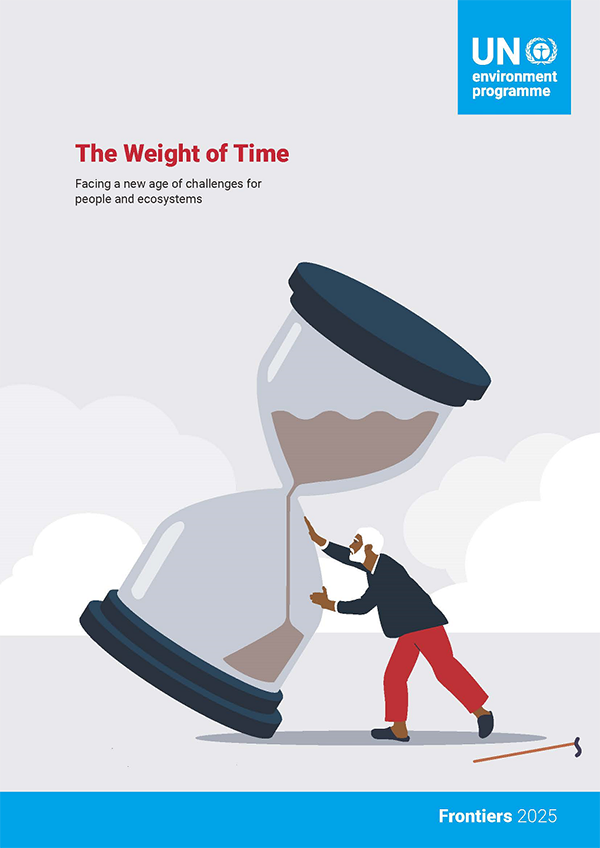
The Weight of Time - Frontiers 2025 Report
The Frontiers Report spotlights emerging environmental issues before they escalate into global or regional crises. While these issues may currently appear localised or small-scale, early intervention is critical to prevent them from becoming widespread challenges.
The United Nations Environment Programme has released its Frontiers 2025 report, The Weight of Time: Facing New Age Challenges for People and Ecosystems, spotlighting emerging environmental issues with urgent global implications. Chapter 4, The Floods Carry More Than Water: Remobilization of Contaminants, was co-authored by Dr. Markus Brinkmann, Director of the Toxicology Centre at the University of Saskatchewan and member of the Global Institute for Water Security (GIWS). Additional contributions from GIWS researchers includes Dr. Karsten Liber (School of Environment and Sustainability (SENS)), Dr. Tim Jardine (Toxicology Centre), Dr. Markus Hecker (Toxicology Centre), and Dr. Karl-Erich Lindenschmidt (SENS).
As climate change contributes to longer, more frequent, and more severe floods, there is a growing risk of reintroducing harmful substances stored in sediments and debris, such as heavy metals and persistent organic pollutants. These toxic legacy contaminants can be remobilized into urban environments and food systems. Effective mitigation measures, such as traditional flood controls (i.e. retention basins), improved drainage systems, nature-based solutions, and monitoring of pollutants are discussed in Chapter 4.
Below is a summary from the UN environment programme (UNEP). Click here to view the summary on the UNEP website.
The 2025 edition of the Frontiers report, The Weight of Time - Facing a new age of challenges for people and ecosystems, features the following chapters:
1. The frozen Pandora’s box: Reactivation of microbes in a warming cryosphere
For millennia, diverse microorganisms in have remained dormant the cryosphere – regions where water is frozen solid. Climate warming is reactivating these dormant microbes. Some are pathogenic, able to infect plants and animals. But these cold-loving microorganisms are crucial ingredients for many biotechnological products. The chapter examines the potential impacts and underlines the urgent need to preserve the microbial biodiversity.
2. Clearing the path: Barrier removal for river restoration
Many of the 62,000 large dams worldwide are ageing. Reaching or surpassing their operational lifespans, many barriers become unsafe, obsolete, or economically unviable, particularly in the face of climate change. Removing dams and barriers is an increasingly accepted strategy to restore river health. Restoring connectivity in river ecosystems benefits aquatic, avian and terrestrial communities and builds resilience to withstand future threats to ecological health.
3. Demographic challenge: Growing old in a changing environment
The world is going through major demographic transitions. The share of the global population aged 65 years and older will rise from 10% in 2024 to 16% by 2050, with most concentrating in low- and middle-income countries. Environmental conditions play a crucial role in determining the health and well-being of older individuals. Older people are more at risk from the consequences of environmental and climate threats.
4. Forgotten but not gone: Remobilization of legacy pollutants by flood events
Many regions have faced an increase in the frequency and magnitude of severe storm events with extreme rainfalls and floods. While the direct effects of these floods on life and infrastructure are widely recognized, indirect outcomes are often overlooked. An underestimated issue is the remobilization and redistribution of chemical contaminants in river sediments by frequent and severe flooding, posing environmental challenges and socioeconomic repercussions.
The above summary is from the UN environment programme (UNEP). Click here to view the summary on the UNEP website.
